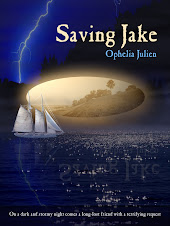I write so much about people coming back from the great beyond to visit (or torment, depending) the living. But what about critters? There are ghost horses in spectral tales from long ago. For instance, there are the horse-and-carriage stories from various estates in England. Sometimes the driver of the carriage is headless. Sometimes even the horses are headless. Nonetheless, they seem to find their way around those dark, foggy manors with no problem. Ghost horses were already such a part of the lore by the early 19th century that Washington Irving included one in his Legend of Sleepy Hollow back in 1820. Native American legends include ghost horses, and even one of our neighboring suburbs has a story about ghostly hooves that clatter down a particular street on many a haunted evening.
But what about other animals? Let's take pets, for instance. A lot of us have lost a beloved pet: how many of us could swear that pet came back to us, sometimes more than once?
We had a black lab mix named Beauty (we adopted her: we didn't name her!) who was very attached to my daughters when they were children, and slept in their room under the bunk beds. Beauty was a sweetheart, like so many labs, and always went up to bed with the girls when it was time for them to turn in. My younger daughter, who slept in the bottom bunk, would talk about how Beauty would actually shake her bed when having doggy dreams, or scratching a doggy itch. My daughter didn't mind; she found it kind of comforting to know the dog was always close at hand.
And then came the sad day that Beauty collapsed during a walk. We brought her to the vet, who kept her overnight for observation, and our beloved dog passed away before morning. We were all heartbroken, and our younger one missed her the most, no longer having that comforting little bed shake during the night.
Except when she did. A few days after Beauty died, our daughter started reporting that she felt the dog shake her bed as always. She heard the familiar doggy snuffle that always accompanied her dreams. And she felt the other more vigorous disturbance that occurred when the dog needed to scratch an itch. This continued, pretty much on a nightly basis, for about two weeks, and then it stopped.
We had one more dog after Beauty, a chocolate lab named Mike. Like Beauty, Mike was a sweet, funny, playful dog, and like Beauty, he passed away earlier than we expected. The girls were older, so neither of them had Mike sleeping under their now-individual beds. But we all, from time to time, hear the jingle of his collar as if he were still ambling down the hall to get a drink of water. We still sometimes heard the click of his nails, the pause, the thump, and the sigh from when he used to go to his favorite corner and lie down. It took months before I stopped opening the door from the garage into the utility room very slowly, so as not to bang him in his inquiring nose when I got home. Mike visited with us more sporadically but maybe a little longer than Beauty did. And then, as always, one day he was gone.
The idea of ghostly animals is a thorny one. For skeptics, there's no doubt we're all imagining things. Believers in human ghosts might give pause at the idea of an animal ghost because that might imply that animals have souls. But for those of us who have experienced these gentle visits, they are as real as the animal we knew in its life, and that's enough for us. After all, if ghosts are real, why can't a loved and cherished pet come back to say a final farewell?






